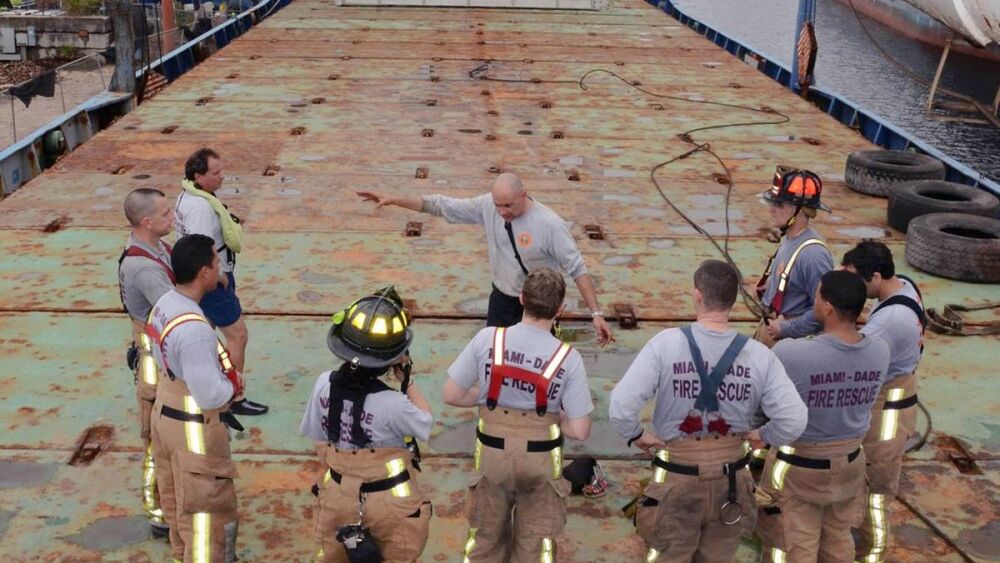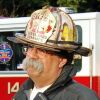As we continue to see the number of traumatic injuries and line-of-duty deaths (LODDs) remain low, it is no secret that TRAINING is the primary ingredient to minimizing those tragedies. While we will never be able to eliminate firefighter death and injury because of the simple fact that there will be times where we must place ourselves or our personnel in harm’s way to try to save a life, those incidents are, fortunately, infrequent.
Even though such incidents are rare, we must be fully prepared to respond to every reported structural fire with the well-trained resources, needed staffing, and command and control leadership to match the reported situation. As we have seen in just the last few months, things can and do turn horrific for a variety of reasons at fires – and during training activities.
GETTING WHAT IS EXPECTED
These days, citizens want to know what they get for the dollars directed to public safety. And while there is a lot of focus on law enforcement, the fire department is not immune from scrutiny. Fire chiefs have a responsibility to honestly (and without “fluff”) ensure that the public (and city council, commissioners – whoever oversees your funding) fully understand what that fire department can do – and what they cannot do – based upon available funding.
For example, if you once had 20 firefighters on your first-alarm assignments, all arriving within 7 minutes, but now, due to funding cuts, you only have 10 firefighters in 10 minutes, it is impossible for you and your members to provide the same level of emergency service as previously expected. Simple math. No emotion. Just the way it is.
Progressive and “public thinking” fire chiefs understand that fire departments sharing resources, automatic mutual aid, mergers when applicable, tougher building and sprinkler codes, and other creative thinking can sometimes help minimize the challenges.
The most basic – but most important – ingredient of fire service delivery is the one that get the job done: our firefighters and our company officers. You can have a great chief, but without great company officers who carry out the mission with discipline, plus firefighters getting the job done with equal respect and discipline, you are like a great football coach without a winning team.
WHAT ARE MEMBERS ACTUALLY BEING TRAINed ON?
This should be obvious, but fire chiefs must find out who is training their firefighters and WHAT they are being taught. For example, in developing its Fire Ground Survival Training, the IAFF applied years of research using veteran subject-matter experts to provide a diverse range of ideas and input, plus seasoned fire officers, resulting in a qualified program a chief can be confident in. Attend the IAFF Fire Ground Survival Training? Without question.
But what about other training opportunities that are out there?
In the last several years, there have been numerous firefighters and fire officers who offer “hands-on” training at or near your location. Now, make no mistake about it, many of the programs are excellent and among the best you can get. Programs that are taught by veteran senior fire officers with decades of fireground and command experience. Officers who fully understand the “big picture” when training firefighters. Unfortunately, there are also programs that involve “instructors” who have yet to ride the front seat of their rig, not to mention command a working incident at their department. Is that important?
That is up to you, chief.
KEY QUESTIONS
Here are a few questions to consider related to WHO you want training your firefighters – and on WHAT:
- What is the written and committed focus, goals and objectives of the training program?
- Are they teaching your firefighters operations based upon recognized national standards?
- Do they test and/or certify the attendees at the conclusion of the training?
- Are they teaching what you perform on your fireground, or are they teaching what they do on their own fireground? Make sure what they teach matches what your fire department does, or what you want done.
- Are they asking you (well before they arrive to do the training) for copies of YOUR standard operating procedures (SOPs)? Are they following that up with discussions with you to ensure they are going to deliver what you expect?
- Are all the instructors qualified or certified to teach the material?
- Are they instructors at their own departments? Do they teach what they are teaching your member at their own department? Do their own chiefs recommend and endorse the program?
- Do they have references from other chiefs regarding their satisfaction with the program?
- Who legally “owns” any problems that may occur during the training? This refers to firefighter injury or even death, behavioral issues, personnel matters or related issues.
- Are the instructors clear on your department’s behavioral policies and expectations?
- Are all the instructors drug and alcohol “clean” and adhering to your department’s standard of substance-free training and operations?
- Have all the instructors successfully (and recently) passed police background checks?
Is this a big deal? Not until something goes wrong. And many things can and have gone wrong with “visiting” instructors – situations that impact the attendees and the chiefs/departments of those attendees.
Some of the questions may seem like a stretch – and may even be easy to ignore – until something goes wrong. As previously stated, without question, there are some phenomenal programs out there, led and taught by some of the best hands-on instructors in the business. Instructors who provide hands-on training that matches the needs of your department. Instructors who lead professionally and understand expected behaviors. However, there are also programs that teach firefighters tactics that may (or may not) work well where they operate but would definitely NOT work well in your community.
IT’S YOUR CALL, CHIEF
Ask yourself: Can you sit back, with confidence, knowing your personnel are receiving the best and most applicable training from the most qualified instructors? And keep in mind, this should not only include training you host but also training your members attend on their own or off site. It all comes back to your department and what training and behaviors you want your personnel to learn.
So, how do you know which programs to pick? That is up to you, chief, but asking the questions couldn’t (or shouldn’t) hurt and will go a long way to minimize any additional “stuff” you have to deal with, you know, as the chief.













